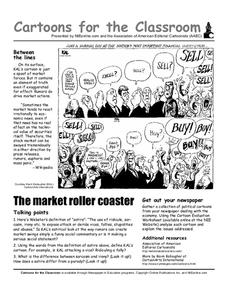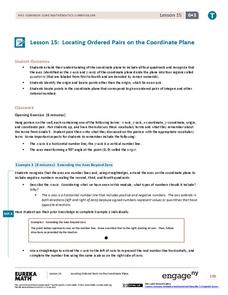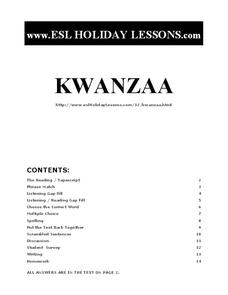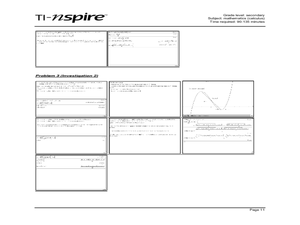Achieve3000
Discriminating Phonemes 2
Some sounds sound very similar! Help your class learn how to distinguish between various sounds by following the steps outlined in this plan. The plan includes a warm-up, a teacher-led portion, and details for guided and independent...
K12 Reader
Adventures with Alliteration! - Nouns
Create poetry with a instructional activity based on alliterative phrases. After reviewing ten nouns, kids add an adjective to each based on the first letter of the noun. They then rewrite five sentences to involve more alliteration.
Curated OER
Which vs. That in Restrictive and Non-Restrictive Clauses
Should you use which or that when using a restrictive clause? What about a non-restrictive clause? Young writers practice their grammar skills with this resource, which provides a straightforward guide to which vs. that, as well as ten...
Spark People
SMART Goal-Setting Worksheet
Help keep young scholars' eyes on the prize with this step-by-step goal setting worksheet.
Code.org
The Need for Programming Languages
LEGO see if you can recreate my design. Individuals build an arrangement from LEGO blocks and write directions for someone else to follow in order to recreate the arrangement. Pairs then swap directions and try to...
Concord Consortium
Metric Volume
Master metric measurements. Given the fact that the volume of one milliliter of water is one cubic centimeter, scholars figure out the volume of one liter of water. They must determine the correct unit of length for a unit cube that...
Illustrative Mathematics
Red and Blue Tiles
Here, second graders are tasked to find the patterns that have an even number of tiles. They are asked to think about why these patterns are even or odd and explain how they know.
Charleston School District
Sketching a Piecewise Function
How do you combine linear and nonlinear functions? You piece them together! The lesson begins by analyzing given linear piecewise functions and then introduces nonlinear parts. Then the process is reversed to create graphs from given...
McGraw Hill
Metric Units of Weight and Volume
Getting the right measurements can save a lot of time and money in the real world. Learners are introduced to unit conversion and how to accurately go from one unit to another. The first pages are notes and then the packet finishes with...
California Education Partners
Gettysburg Address
Looking for an assessment that reveals how well readers understand complex text? Check out an assessment module based on "The Gettysburg Address." Pupils are asked to craft an essay that demonstrates their understanding not only of...
Curated OER
Cartoons for the Classroom: The Market Roller Coaster
Hop on the stock market rollercoaster! This political cartoon analysis has scholars examine a cartoon about the ups and downs of a volatile market. Background information and a quote provide context for analyzing the cartoon, and 3...
Mathed Up!
Simple Perimeter, Area, and Volume
Young mathematicians find the area and perimeter of shaded shapes on a grid of unit squares. The sheets challenge class members to find the volume of various solid prisms. Each questions also includes the total value of suggest...
Education Development Center
Integer Combinations—Postage Stamps Problem (MS Version)
Number patterns can seem mysterious. Help your learners unravel these mysteries as they complete an intriguing task. Through examination, collaborative groups determine that they are able to produce all integers above a certain...
Catherine Schmidt-Jones
Two Traditional Korean Songs
"Arirang," the most popular Koeran folk song, and "Doraji" are featured in a resource that includes suggestions for how to incorporate these hauntingly beautiful songs into your curriculum.
Rochester Institute of Technology
Artificial Eye
Scientists in California developed a bionic eye that allows blind people to see edges of objects in black and white and costs $145,000. In the activity, groups of scholars discuss bioengineering, focusing on the human eye. They then...
EngageNY
Locating Ordered Pairs on the Coordinate Plane
Four quadrants, four times the fun. Future mathematicians learn the terminology associated with the coordinate plane and how to plot points in all four quadrants. A worksheet tests their understanding of the material in the 16th...
Fluence Learning
Divide Shapes
Let's partition rectangles into equal parts. Assess learners on their ability to divide shapes into equal parts, and their ability to explain their thinking.
Allegany-Limestone Central School
Plantae WebQuest
Send your young life scientists on a plant webquest that has them reading case studies to decide if seeds are seeds and plants are plants.
ESL Holiday Lessons
Kwanzaa
Teach English language learners about the week-long holiday of Kwanzaa that is celebrated around the world during December. It includes holiday-themed reading comprehension passages, phrase matching, fill-in-the-blanks, and journaling...
Illustrative Mathematics
Saving Money 2
Adding money is a key skill in life. Give a learning exercise that requires second graders to find the total amount of money Louis needs to make certain school supply purchases.
Curated OER
Two Investigations of Cubic Functions
Through learning about cubic functions, students graph cubic functions on their calculator. Students determine the local maximum and minimum points and the tangent line from the x-intercept to a point on the cubic function. ...
Curated OER
Comparing Fractions with Like Numerators or Denominators
Who has more candy? Learners start by examining a word problem and its visual illustration to determine how Joel's candy numbers compare to Toby's. They fill in the appropriate symbol. Next, mathematicians compare fractions and two...
Curated OER
The United States and Canada: Climate and Vegetation
Display U.S. and Canadian climate and vegetation through this text-companion worksheet. Learners read about the geography of these regions, take notes, and answer 3 comprehension questions as they read the selection. A graphic organizer...
Curated OER
Homonyms and Homographs
In this homonym and homograph worksheet, learners use a word bank to answer a set of 5 questions about homonyms, then do the same for 5 questions about homographs. An answer key is included.























